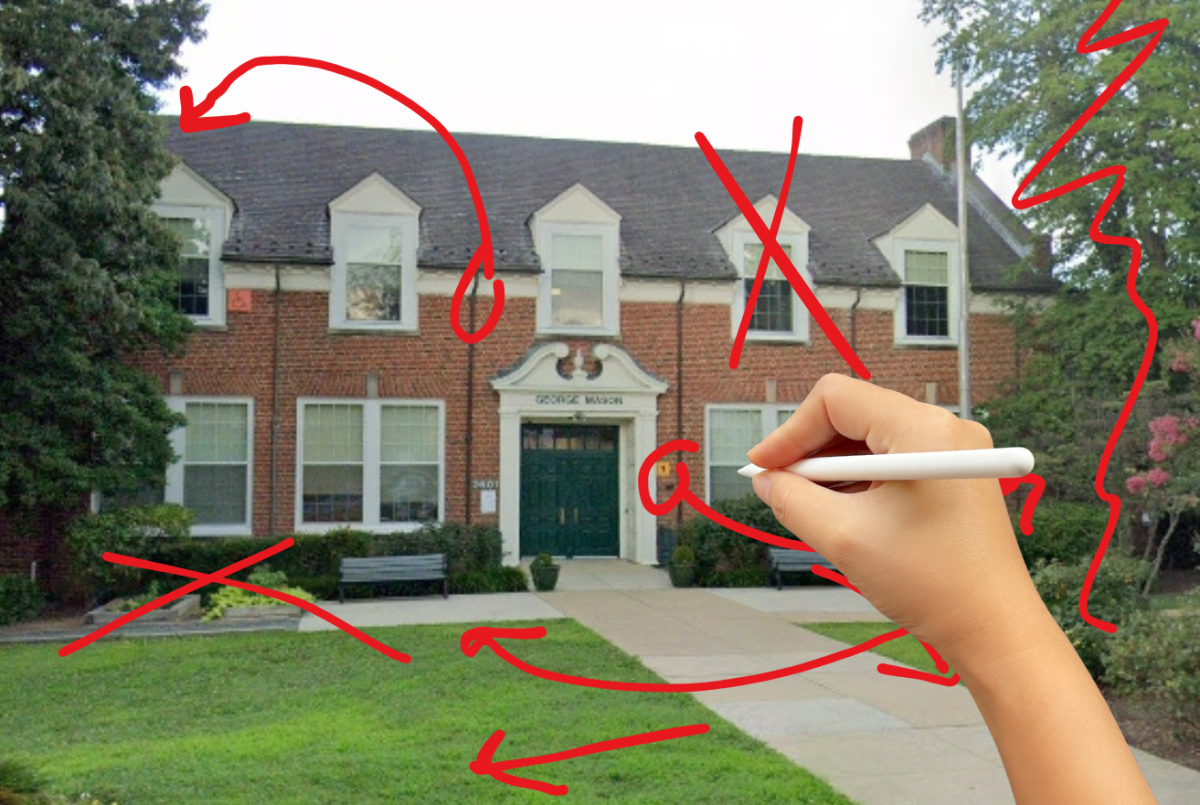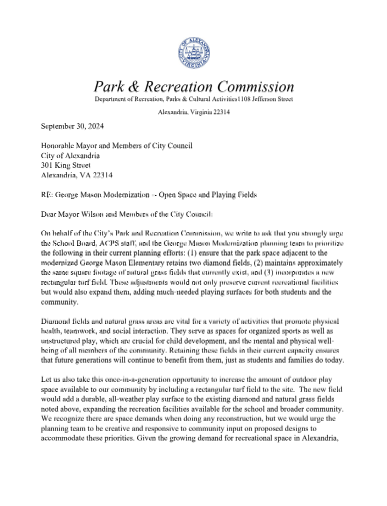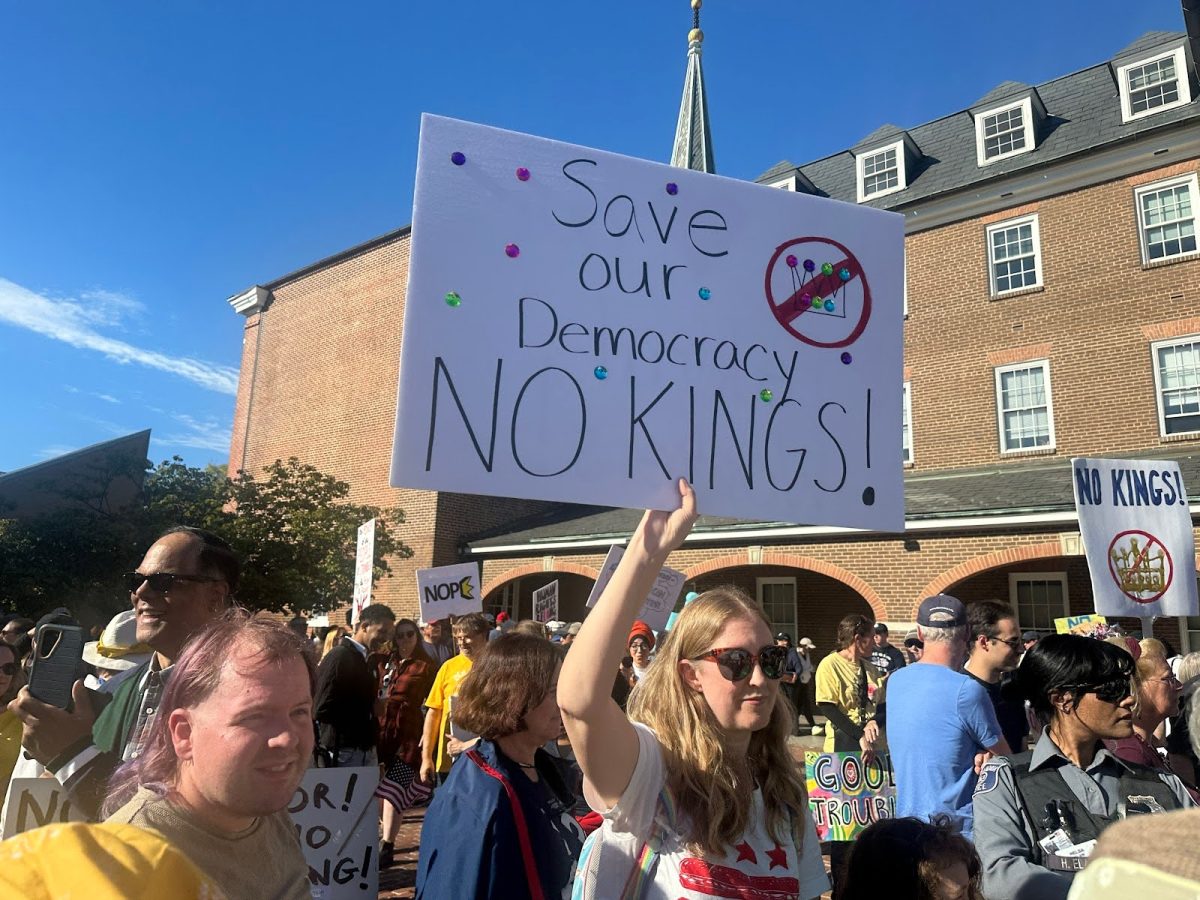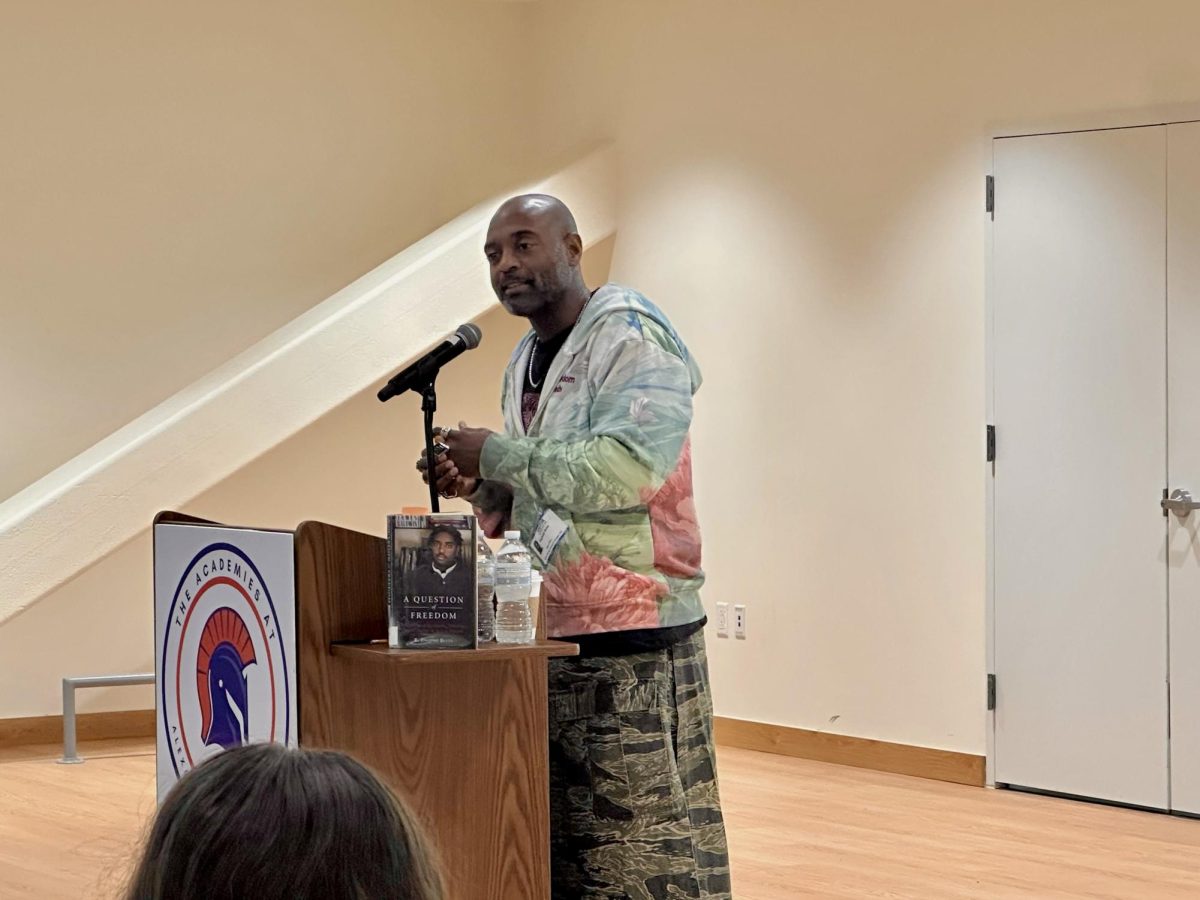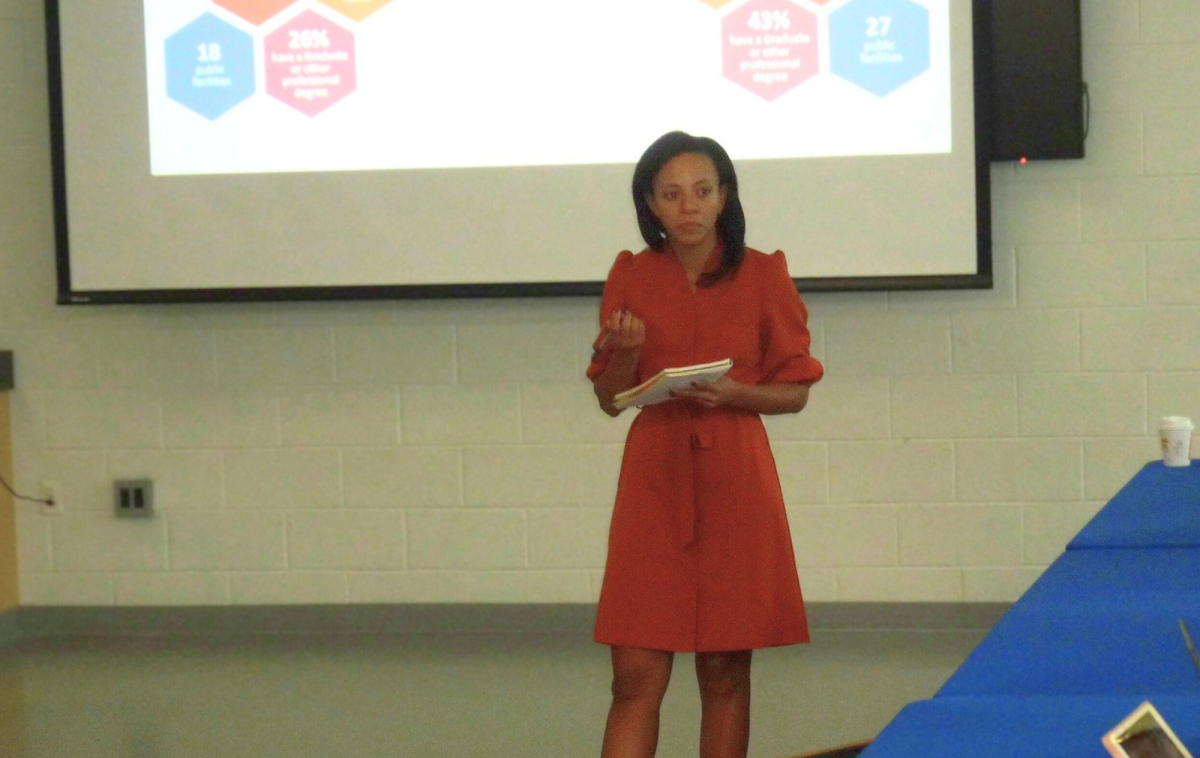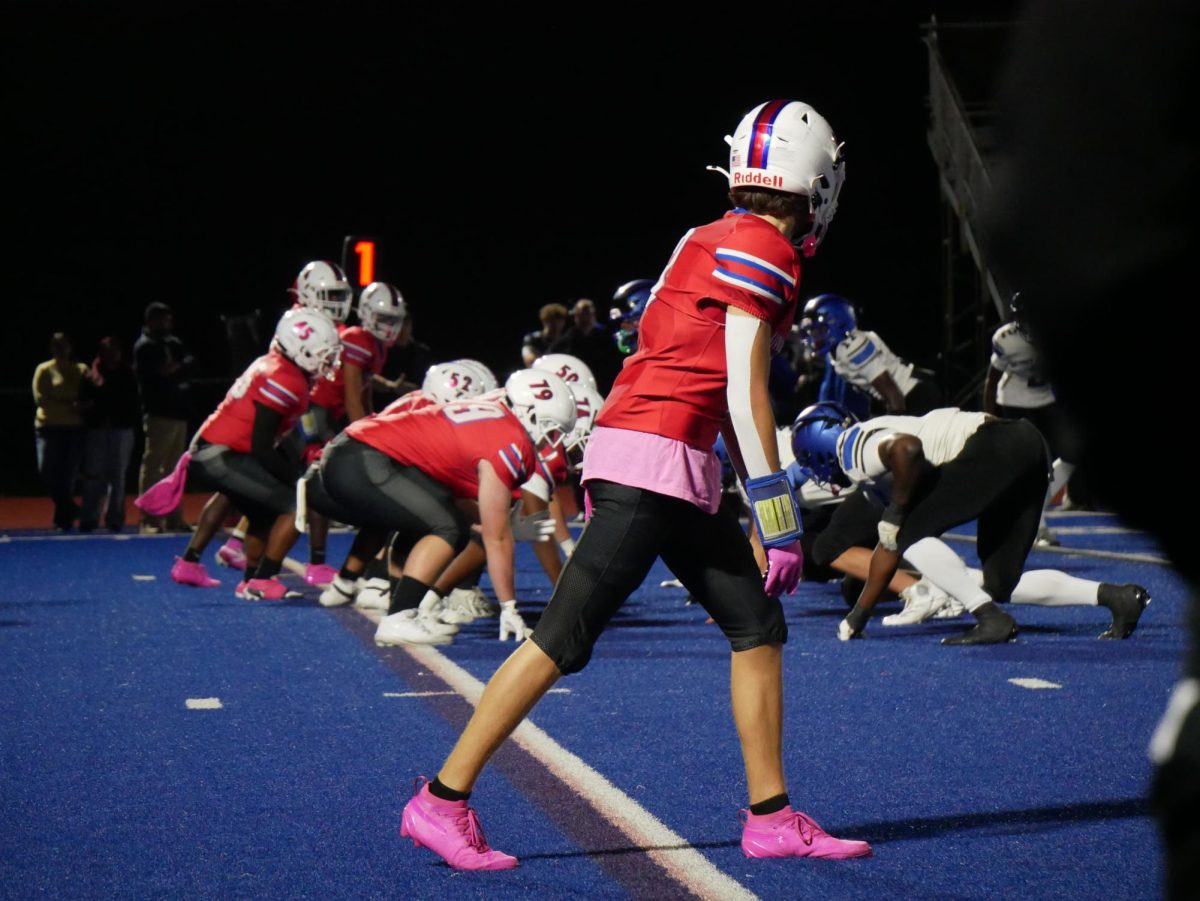Alexandria City Public Schools plans to completely rebuild George Mason Elementary School this summer as part of the city’s modernization efforts. This project will improve the 85-year-old building, which has sustained multiple repairs but now requires a full replacement. However, the project has sparked concerns among community members on the impact on George Mason Park, a well-used green space behind the school.
The modernization project began in 2019 when ACPS hired Studio Twenty Seven Architecture to prepare a “Feasibility Study” on the elementary school. This study consisted of an assessment of the school to determine possible renovations and replacements based on budget, land and schedule.
Former George Mason student, and now senior at Alexandria City High School, Braelynn Tomanio shared her personal feelings about the project.
“When I first heard about the George Mason project, there were mixed emotions,” she said. “Yes, George Mason could use some renovations, but it’s my home and I didn’t want to see it any other way.”
However, when the modernization plans began to take place, Tomanio was pleasantly surprised by the project.
“After following the blueprints for the project, I realized one of their options includes keeping the front face of the building,” said Tomanio. “I really loved this idea and hoped they [would] move forward with it. It will maintain the charm we all know and love about the building.”
While there are expected improvements for the actual infrastructure of the school, community members have expressed concern, especially regarding the impact on George Mason Park.
Project advisory group member Mimi Saunders, who represents the local community, has worked to provide George Mason Park users with a space to voice their concerns.
“I have lived in the City of Alexandria for 30 years — 23 of those years at my current location, right next to George Mason Park,” said Saunders. “I’ve had a bird’s-eye view of the Park for 23 years, so I know how significantly it is enjoyed by Alexandrians.”
Community members first debated the field’s future in 2019, when the project was originally introduced. In the first community meeting, community members pushed back against the proposal to build a new school on the existing tennis courts and pave over the grass field to create a bus turnaround lane.
“The primary plea from the community — which was loud and clear — was to rebuild the school at its current location and keep the entire grass filled intact” said Saunders.
In September 2021, ACPS purchased 1703 N. Beauregard St. to use as a swing space, allowing students to attend classes during construction and keeping the building on its original site rather than the field. However, as the project continued, residents felt that their voices were being ignored.
“Unfortunately, when the project started up after Covid, the City Rebuild [and] Modernization Team ignored the community request to save the field in its entirety,” said Saunders. “The Architects prepared three school design options without community input and presented them at the first community meeting. When advisory members asked for an option where the school design did not encroach on the grass field, the request was denied.”
According to the ACPS George Mason Elementary Modernization website, “all three design options considered in the design phase impact less than 10 percent of the existing open space.”
However, Saunders does not agree with this assessment.
“This just isn’t true,” said Saunders. “One half of the current grass field will be taken away and replaced with a playground with equipment, a turf field, and a basketball court.”
In response, a group of concerned citizens went door-to-door and created an online survey to gather signatures asking the City team to provide a “save the field” design option, collecting 500 signatures in three days. Despite this, the request was rejected by the architects.
In relation to the concerns about the environmental impact of the project on the park, Geoff Goode, District II representative on the City Recreation, Parks & Cultural Activities (RCPA) commission board, said, “[This is] certainly a valid concern, and I would expect that the contractor responsible for the project will have a plan to rectify any impacts to the surrounding landscape.”
The RPCA sent a letter to former Mayor Justin Wilson and members of the city council to emphasize the importance of preserving and expanding the recreational space. In the letter, the commission urged for them to retain the two diamond baseball fields, maintain approximately the same amount of natural grass fields, and incorporate a new rectangular turf field.
“These adjustments would not only preserve current recreational facilities but would also expand them, adding much-needed playing surfaces for both students and the community,” the Commission wrote.
The RPCA members believe city officials have considered their ideas.
“The Commission has had some members of the public speak during at least one of the Commission meetings. I think the letter we wrote reflects some of the concerns that we heard,” said Goode. “I would hope that our feedback was taken into consideration.”
However, Saunders expressed frustration that other community concerns have not been met and the meetings are not set up to allow beneficial community engagement.
“The City’s own Planning Commission has even written a letter criticizing the way these meetings about rebuilds of City schools have been orchestrated — that they are like a one-way street.” she said. “The City Team runs the 1-hour meetings with a set agenda and a small amount of time for questions and comments at the end. Questions, answers and comments are logged, but whatever answer the Team gives in response to a question is what goes. There is no back-and-forth, no real consideration of what a community member brings to the table.”
Despite frustrations, the city will move forward with the project and construction will begin when the city approves the plan.
Planners have incorporated multiple sustainability efforts for the modernization, with the new building expected to meet or exceed Leadership in Energy and Environmental Design (LEED) Gold certification and include geothermal wells. Additionally, storm water improvements will be implemented to mitigate the persistent drainage issues experienced in the area.
“There will [also] be dedicated space at the school for RPCA staff, so that they can plan and run programs from the new building,” said Goode. “There will also be access to bathrooms for recreation activities outside of school hours. These are great additions to the plan and are supported by the Commission.”
When asked if there was anything she was looking forward to about the modernization, Saunders was measured.
“Unfortunately, there isn’t much I’m looking forward to,” admitted Saunders. “Except maybe there’ll be some nice plantings around the school campus? And I guess if the water management devices they implement work in mitigating the heavy water flow during rains, that should be beneficial.”
Tomanio felt differently, and is looking forward to the new improvements.
“From what I’ve heard, the walking trail behind the school will be maintained which I think is very important,” said Tomanio. “Even if there is less green space, having the walking trail will still provide opportunities for the community to get out, exercise and socialize like we currently do.”
The city must approve several construction steps before the project can begin. ACPS is in the process of submitting a Development Special Use Permit (DSUP), which will require city approval before moving forward.



